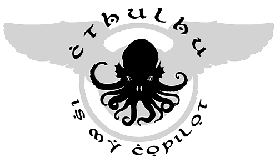I thought this agreement between Ford and Fiat, before the Chrysler bailout, would result in Michigan production.
The British commercials are a little too intense for me though:
Ford executives say they are now actively considering bringing models to Canada that won't make it to the U.S., such as the Ka minicar, to better service this market and to keep up with various moves by their competitors.
This is a change in direction for the Detroit-based firm, since it has spent the last couple of years not importing models from Mercury that the Americans get.
Phil Martens, Ford's director of North American product development, admitted at the recent Toronto auto show that his company has to do something to help its Oakville-based distribution arm. ''We have to figure out a way to develop product for Canada and get in the game,'' he said.
He also pointed out that it's very difficult and expensive to develop a new model for the Canadian market, which is why he is looking around the world for something that already exists and might be appropriate.
That brings up the subject of the KA, which has had significant success in Europe since it debuted there in 1996.
Ka is definitely a very compact city car, in any of the three versions available -- regular hardtop, Streetka two-seat roadster, and the Sportka.
The original shape of the Ka has been maintained over the years (they call it an ''iconic'' shape), but there have been alterations and refinements through they years.
This shape is supposed to say ''fun. It is minimalistic and functional. It is quirky and full of personality. It is Ford Ka, and it remains Ford Ka. It has no imitators.''
The shape may have stayed the same, but the Ka is now offered with the 1.3-litre Duratec 8V inline-four, which the company describes in a press release as ''a free-revving engine that delivers improved acceleration and bottom end torque, refined driving quality and improved fuel economy benefits to the baby Ford.''
The engine has been calibrated to provide strong low-end torque for flexibility and strong performance feel at low engine speeds, with the 80-odd ft.-lb arriving at 3,000 rpm and nearly 90 percent of maximum torque available between 1,500 and 4,500 rpm.
This engine is coupled to Ford's iB5 five-speed manual gearbox equipped with a hydraulically-operated clutch system.
The British commercials are a little too intense for me though:
Ford executives say they are now actively considering bringing models to Canada that won't make it to the U.S., such as the Ka minicar, to better service this market and to keep up with various moves by their competitors.
This is a change in direction for the Detroit-based firm, since it has spent the last couple of years not importing models from Mercury that the Americans get.
Phil Martens, Ford's director of North American product development, admitted at the recent Toronto auto show that his company has to do something to help its Oakville-based distribution arm. ''We have to figure out a way to develop product for Canada and get in the game,'' he said.
He also pointed out that it's very difficult and expensive to develop a new model for the Canadian market, which is why he is looking around the world for something that already exists and might be appropriate.
That brings up the subject of the KA, which has had significant success in Europe since it debuted there in 1996.
Ka is definitely a very compact city car, in any of the three versions available -- regular hardtop, Streetka two-seat roadster, and the Sportka.
The original shape of the Ka has been maintained over the years (they call it an ''iconic'' shape), but there have been alterations and refinements through they years.
This shape is supposed to say ''fun. It is minimalistic and functional. It is quirky and full of personality. It is Ford Ka, and it remains Ford Ka. It has no imitators.''
The shape may have stayed the same, but the Ka is now offered with the 1.3-litre Duratec 8V inline-four, which the company describes in a press release as ''a free-revving engine that delivers improved acceleration and bottom end torque, refined driving quality and improved fuel economy benefits to the baby Ford.''
The engine has been calibrated to provide strong low-end torque for flexibility and strong performance feel at low engine speeds, with the 80-odd ft.-lb arriving at 3,000 rpm and nearly 90 percent of maximum torque available between 1,500 and 4,500 rpm.
This engine is coupled to Ford's iB5 five-speed manual gearbox equipped with a hydraulically-operated clutch system.





Comment